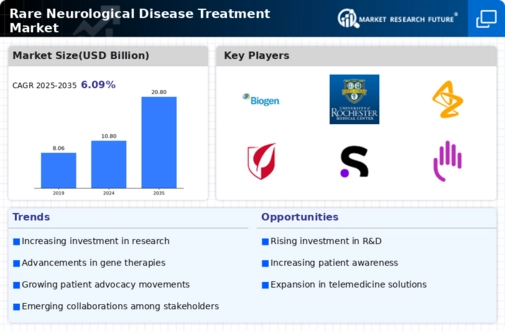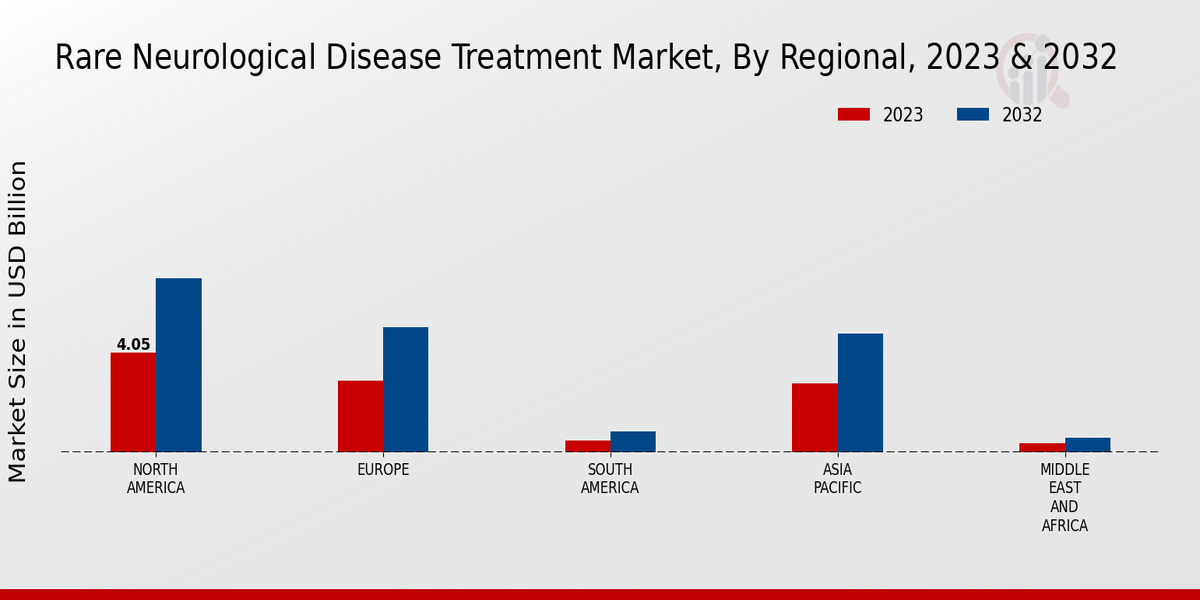Market Growth Projections
The Global Rare Neurological Disease Treatment Market Industry is projected to experience substantial growth in the coming years. With an estimated market value of 10.8 USD Billion in 2024, it is anticipated to reach 20.8 USD Billion by 2035, reflecting a CAGR of 6.09% from 2025 to 2035. This growth trajectory is indicative of the increasing investments in research and development, coupled with the rising prevalence of rare neurological diseases. As the industry evolves, stakeholders are likely to focus on innovative treatment solutions, ensuring that the market remains dynamic and responsive to patient needs.
Emerging Markets and Globalization
Emerging markets are becoming increasingly important in the Global Rare Neurological Disease Treatment Market Industry. Countries in Asia-Pacific and Latin America are witnessing a rise in healthcare investments and improvements in infrastructure, leading to better access to treatments. As globalization facilitates the exchange of knowledge and technology, pharmaceutical companies are expanding their reach into these markets. This trend is expected to enhance treatment availability and affordability, thereby driving market growth. The increasing focus on rare diseases in these regions indicates a promising future for the industry as it adapts to meet diverse patient needs.
Government Initiatives and Funding
Government initiatives and funding play a crucial role in shaping the Global Rare Neurological Disease Treatment Market Industry. Various countries are implementing policies to support research and development in rare diseases, providing grants and incentives for pharmaceutical companies. For example, the Orphan Drug Act in the United States encourages the development of treatments for rare conditions by offering tax credits and market exclusivity. Such initiatives are vital in fostering innovation and ensuring that patients have access to necessary therapies. The increasing governmental focus on rare diseases is expected to drive market expansion and improve treatment accessibility.
Growing Patient Advocacy and Awareness
The rise of patient advocacy groups and increased awareness about rare neurological diseases are significant factors influencing the Global Rare Neurological Disease Treatment Market Industry. Organizations dedicated to specific conditions are actively promoting research, funding, and awareness campaigns, which help in mobilizing resources for treatment development. This heightened awareness leads to earlier diagnosis and better patient outcomes, thereby expanding the market. Furthermore, as more patients and families become informed about available treatments, the demand for innovative therapies is likely to increase, further stimulating market growth.
Advancements in Biotechnology and Pharmaceuticals
Technological advancements in biotechnology and pharmaceuticals are significantly influencing the Global Rare Neurological Disease Treatment Market Industry. Innovations in gene therapy, monoclonal antibodies, and personalized medicine are paving the way for novel treatment modalities. For instance, therapies targeting specific genetic mutations associated with rare diseases are emerging, potentially transforming patient outcomes. The market is projected to grow at a CAGR of 6.09% from 2025 to 2035, reaching an estimated value of 20.8 USD Billion by 2035. These advancements not only enhance treatment efficacy but also attract investments from pharmaceutical companies, further propelling market growth.
Increasing Prevalence of Rare Neurological Diseases
The rising incidence of rare neurological diseases is a primary driver for the Global Rare Neurological Disease Treatment Market Industry. As awareness and diagnosis improve, more patients are identified, leading to an estimated market value of 10.8 USD Billion in 2024. Conditions such as Huntington's disease and amyotrophic lateral sclerosis are gaining attention, prompting healthcare systems to allocate resources for research and treatment. This growing patient population necessitates innovative therapies and specialized care, which in turn fuels market growth. The increasing prevalence indicates a pressing need for effective treatment options, thereby enhancing the market landscape.
























